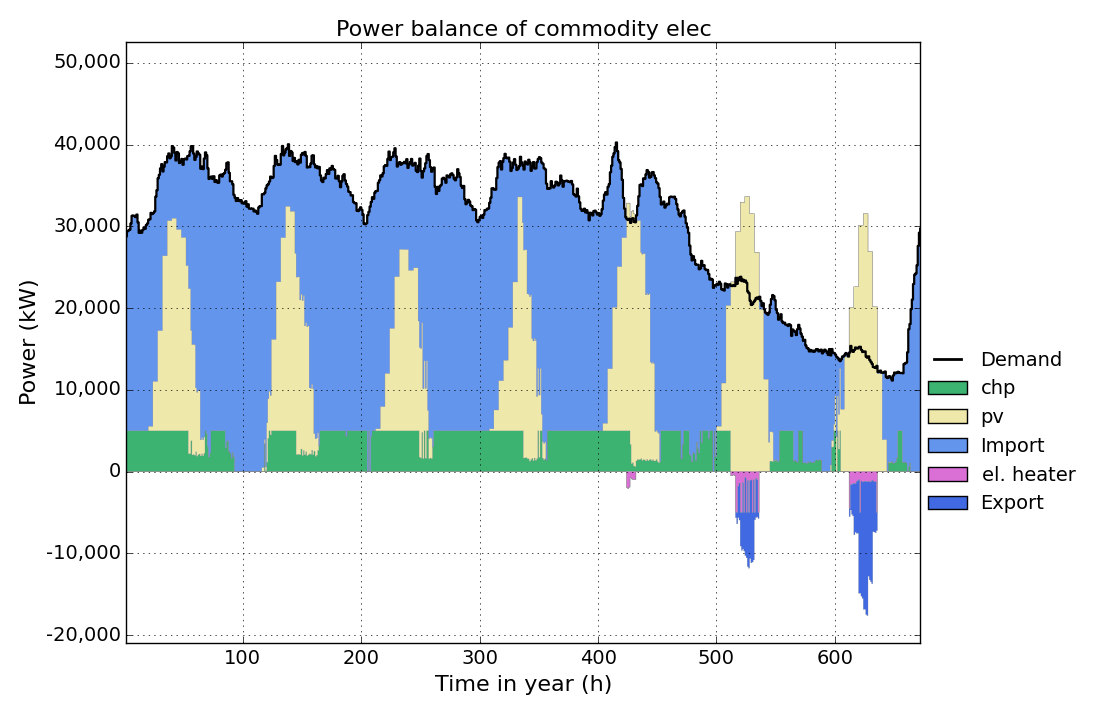ficus: A (mixed integer) linear optimisation model for local energy systems¶
| Maintainer: | Dennis Atabay, <dennis.atabay@tum.de> |
|---|---|
| Organization: | Institute for Energy Economy and Application Technology, Technische Universität München |
| Version: | 0.1 |
| Date: | September 10, 2015 |
| Copyright: | This documentation is licensed under a Creative Commons Attribution 4.0 International license. |
Features¶
- ficus is a (mixed integer) linear programming model for multi-commodity energy systems.
- It finds the minimum cost energy system to satisfy given demand timeseries for possibly multiple commodities (e.g. electricity, heat)
- It considers given cost timeseries for external obtained commodities as well as peak demand charges with configurable timebase for each commodity
- It allows to deactivate specific equations, so the model becomes a linear programming model without integer variables
- It supports multiple-input and multiple-output energy conversion technologies with load dependent efficiencies
- Thanks to pandas, complex data analysis code is short and extensible.
- The model itself is quite small thanks to relying on the Pyomo packages.
- ficus includes reporting and plotting functions
Screenshots¶
This is a typical result plot created by ficus.plot_timeseries(), showing electricity
generation, consumption and storage levels over 7 days:

Dependencies¶
- matplotlib for plotting
- pandas for input and result data handling, report generation
- pyomo for the model equations and interface to optimisation solvers (CPLEX, GLPK, Gurobi, ...).